Your Trusted Custom Neoprene Seat Covers Products Manufacturer
We make it easy for you to build your brand by providing a one-stop solution to your OEM/ODM custom production.
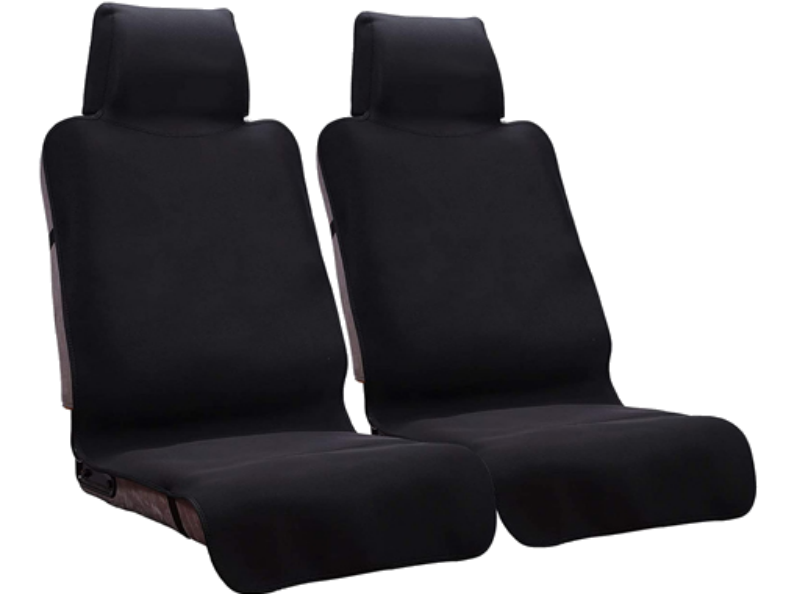
We ensure that every custom neoprene seat covers with high quality will stand out.
neoprene seat covers customization in various types,colors,pattern ,logo,and others design is what Oneier Company does best.
We offer OEM neoprene seat covers products in a broad range of types, artwork, packaging and other accessories.
Also, we have a strong fabric supply chain to provide the widest range of fabric customized services for your neoprene seat covers.
Our product has received 100% repurchase from our partners,Strict quality control reflected in product details.

Detail One
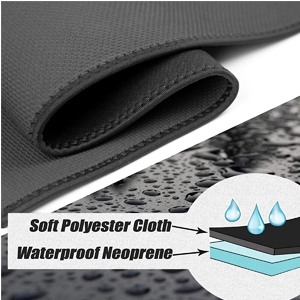
Detail Two
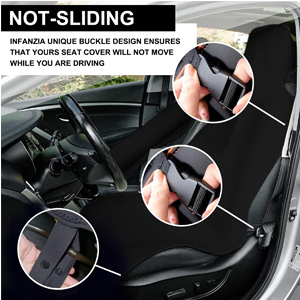
Detail Three
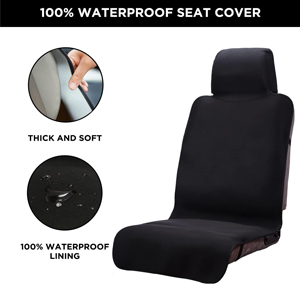
Detail Four
You just choose any types you prefer for your custom neoprene seat covers, and we will take care of the rest.
As a custom neoprene products manufacturer, Oneier has a team of 20+years experienced engineers, designers, sales consultants, and production team who have been engaged in the research and development of different neoprene products. We also have the ability and equipment to conduct advanced testing, production, and packaging. After all, our goal is to make your ideas into a reality.
The benefits And Value We can Bring To You
Custom
Sample making 1-3 day
Delivery
Fast delivery in 1-10 days helps you to take more share of the market
Quality
No complaints, no minor hassles for your customers, which will make your sales worry-free
Cost
Fully automatic equipment manufacturing process for each customer to save production costs and make it more competitive
Support
Put forward your ideas, we design to production completion, for you to save more intermediate costs
Certification
Qualified by BSCI ,Disney ,ISO9001,SGS
You can totally trust us with all certifications shown below
Certification Guarantee

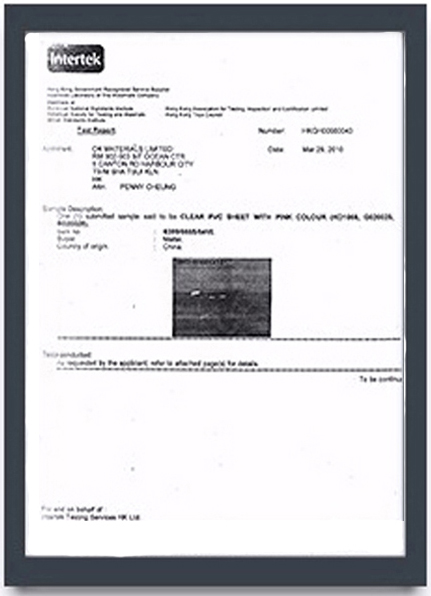
International standardized certification and recognition, so that our workflow, product quality, and management level maintain a high degree of worldwide consistency, ensuring the safe use of each customer.
After obtaining the certificate, enterprises are able to improve product quality by implementing standards, improving and perfecting management, so that each pipe household is satisfied.
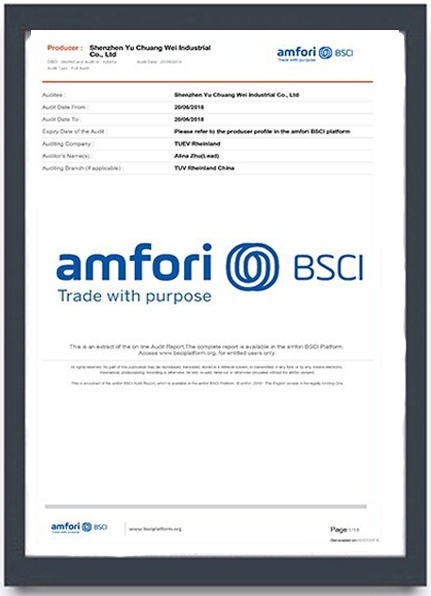
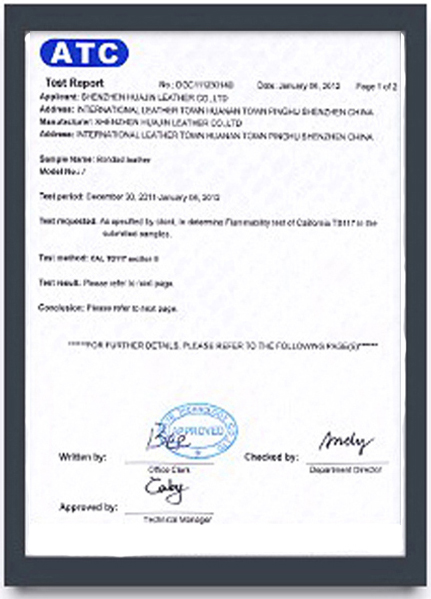
Official certification by third parties, so that products and services are secure and standardized, and every item delivered to the customer is guaranteed.
Hey, don't hesitate to try & feel the FREE SAMPLES before making up your decision
Cooperating Brand Partners Trusted
Your product is produced in reliable factory like our already cooperating international brand partners below:

Effective Production Process of Your Neoprene Products OEM
We believe quality is always the key to success, which includes a responsible approach to manufacturing, and controlling whole process.

1-Business Contact

2-Sample Creation

3-Material Preparing

4-Material Cutting

5-Bulk Production

6-Quality Inspection

7-Product Packaging

8-Cargo Warehousing
What did our happy clients say?
Andrew Jackson
22nd Oct,2021 America
Due to policy reasons, my team and I have analyzed and developed the sales of neoprene koozie. The sales volume increased by 200% last month. It was beyond my expectation. The store staff told me that our this neoprene sleeves always attract the attention of customers. many old customers introduce their friends to come and purchase because of the good quality of our products.It’s true. Awesome, this works better than any other way of advertising. Thank you for providing us with the neoprene can cooler.


Carl Parein
13th Dec,2019 France
Because of the needs of the company’s project development, I selected many suppliers of neoprene koozie for comparative analysis. I was very lucky to find you on Google. I was surprised by the professionalism of your team. From the sharing of product expertise, the introduction of production technology, and the whole service of order production and delivery, the whole project has been well connected. Our products are sold well in the local market. Thank you very much, We will try to maintain cooperation with you all the time
Daniel Garcia
25th May,2010 Australia
I have chosen neoprene koozie as a new project for the company. In the early stages, I analyzed many Chinese suppliers, but only you mentioned,welcome me to visit your factory at any time. I will not hesitate to schedule and purchase a flight to your company’s factory to learn about your company’s products, production processes, and other information. Your reception service is very meticulous,That’s great. Your factory’s professionalism and service have given me confidence in managing my neoprene can coolers project well. thanks

More Things about Neoprene Seat Covers
What Are The Benefits of Neoprene Seat Covers Products?
The advantages of neoprene seat covers are as follows:
- Durability and Longevity: Neoprene is recognized for its exceptional durability. Seat covers made from this material are resistant to tearing and wearing out, potentially saving vehicle owners money on replacements in the long run.
- Water Resistance and Easy Cleanup: Neoprene seat covers are waterproof, making them ideal for protecting seats from spills. Any liquid spilled on the seats can be easily cleaned up, preventing moisture penetration into the cloth fiber and underlying car seat.
- Comfort: The soft texture of neoprene adds comfort to vehicle seats, enhancing the driving experience. This feature is particularly beneficial for long drives or for individuals who spend significant time in their vehicles.
- Prevents Moisture Build-Up: Similar to diver wetsuits, neoprene seat covers prevent excess moisture from penetrating and harming the car seats. This is crucial for maintaining the quality and longevity of the seats, especially in humid or wet environments.
- Shock Absorption and Non-Slip Properties: Neoprene seat covers provide shock absorption, adding an extra layer of comfort. They are also non-slip, which helps keep them in place and ensures a stable seating surface.
- Protection Against Various Elements: These covers protect car seats from common spills like coffee and grease, and they are also effective against mud, pet slobber, and other accidents. This makes them an excellent choice for vehicles frequently used in outdoor activities or by families with young children and pets.
- UV-Stabilized and Color Fast: High-quality neoprene seat covers are UV-stabilized and color fast, ensuring they do not lose color or degrade under sunlight exposure. This is particularly important for vehicles exposed to intense sunlight for extended periods.
- Non-Flammable Nature: Neoprene seat covers are non-flammable, which adds an extra layer of safety to the vehicle’s interior.
- Easy to Clean and Maintain: Given their resistance to water and most common stains, neoprene seat covers are easy to maintain and clean, often requiring just a simple wipe down.
- Versatility in Application: Neoprene seat covers are suitable for a wide range of vehicles and can withstand various environmental conditions, making them a versatile choice for different types of vehicles.
In summary, neoprene seat covers offer a combination of durability, comfort, protection against moisture and spills, ease of maintenance, and safety features, making them a popular choice for vehicle owners seeking a practical and long-lasting solution for their car interiors.
What Is The Difference Between Neoprene and Leather?
Neoprene and leather, widely used for car seat covers, present distinct characteristics, each offering specific advantages and limitations.
Aesthetics and Style
Leather seat covers are often considered more aesthetically pleasing and luxurious compared to neoprene. Leather provides a smooth, premium feel and is available in a wide range of colors and finishes. It can be tailored with pleating, stitching, and piping for a unique look. Neoprene, although available in various colors, doesn’t match the upscale appearance of leather.
Breathability and Comfort
Leather, especially when perforated, offers better breathability than neoprene. This feature is crucial for comfort, as it allows perspiration and heat to be transferred away from the body, making leather a more comfortable option in warm conditions.
Durability and Maintenance
In terms of durability, neoprene outperforms leather. It is less prone to staining, cracking, discoloration, and UV damage, holding up better over time. Leather, while durable, requires more care to maintain its texture and appearance, including special cleaning products and treatments to prevent drying and cracking.
Waterproofing
Neoprene has a natural advantage in waterproofing, being inherently water-resistant without needing an additional layer. This makes it particularly suitable for situations where seats might get wet, such as with kids, pets, or outdoor activities. Leather can be waterproof, but typically this requires a layer of waterproof material underneath the surface.
Cleaning and Washing
Both materials present challenges in cleaning. Neoprene is not suitable for machine washing and requires hand washing, while leather needs regular conditioning and special cleaning products to avoid drying out. This makes maintenance of both materials somewhat demanding.
Price
Price is a significant factor in choosing between these materials. Neoprene seat covers are generally more budget-friendly, ranging from $20 to $50. Leather seat covers, on the other hand, are more expensive, with prices starting at $50 and going up to $200 or more, reflecting their premium status and higher manufacturing costs.
In summary, the choice between neoprene and leather seat covers depends on individual preferences and requirements. Neoprene offers practical benefits like durability and waterproofing at a lower cost, making it a sensible choice for active or utilitarian use. Leather, while more expensive and requiring more care, provides a luxurious look and feel, better breathability, and a more comfortable experience, especially in warmer climates.
Custom Neoprene Seat Cover Types
Neoprene seat covers, used extensively for car seats, come in various types, each with specific features and benefits. Based on my research and experience in the production and research of neoprene seat covers, here are some notable types and their characteristics:
1. Goodyear Neoprene Seat Covers
- Characteristics: These covers are made of 100% neoprene fabric and designed for the front bucket seats of most modern vehicles. They feature a two-piece, slip-on design, and are machine washable.
- Pros: Universal fitment for about 92% of vehicles, easy installation, and trusted brand name.
- Cons: Limited color options (only black with a yellow Goodyear logo) and cover power seat controls.
2. Elantrip Neoprene Seat Covers
- Characteristics: These covers use a triple-layer design with a waterproof outer layer, a 2-mm thick layer of neoprene, and a mesh cloth inner liner, providing two layers of waterproof protection.
- Pros: Budget-friendly, fits most vehicles, and allows access to factory-installed armrests and some adjustment controls.
- Cons: Less of a factory look with more seat upholstery exposed and no bright color options.
3. Gorla Gear Neoprene Seat Covers
- Characteristics: Designed for vehicles with elaborate power seats, these covers are minimal, covering only the key contact points and leaving the sides open.
- Pros: Universal fitment, easy to install and remove, and available in multiple colors including hot pink.
- Cons: More expensive for a one-piece item and obvious non-factory fitment.
4. Body Glove Neoprene Seat Covers
- Characteristics: These covers stretch over the entire exterior of bucket seats and are designed with the Hyper Fit cam-lock system for a snug fit.
- Pros: Snug and stylish fit on most modern vehicles, available in solid black or grey, and additional color options for seatback bolsters.
- Cons: More expensive option and full-seat design covers side-mounted controls.
5. FH Group Neoprene Seat Covers
- Characteristics: These covers are available in kits for both front and rear seats of specific makes and models, offering full-seat coverage.
- Pros: Model-specific products, many color options, and include both front and rear seat covers.
- Cons: Not universal, may cover some power control switches, and costlier than two-seat packages.
6. Neo-Ultra™ Seat Covers
- Characteristics: An advanced version of neoprene, non-toxic, waterproof, and has higher abrasion resistance with an anti-snag surface.
- Pros: Non-toxic, waterproof, and durable enough for SUVs and medium-duty work trucks.
- Cons: Not specified.
7. NeoSupreme Seat Covers
- Characteristics: A more cost-effective version of Neoprene, offering cushioned comfort but with less water-resistance.
- Pros: Economical, durable, and comfortable.
- Cons: Lower level of water resistance compared to original Neoprene.
8. Custom-fit Neoprene Seat Covers
- Characteristics: Tailored to fit the exact measurements of specific vehicle models, ensuring a seamless and snug fit.
- Pros: Maximum coverage and protection, superior fit and finish.
- Cons: Typically more expensive than universal covers.
9. Universal Neoprene Seat Covers
- Characteristics: Designed to fit a wide range of vehicle seats, available in various sizes and configurations.
- Pros: More affordable, adaptable to different vehicle types.
- Cons: May not offer the same level of precise fitment as custom-fit covers.
In conclusion, neoprene seat covers come in various designs, each tailored to specific needs, from high-end models with superior fit and finish to more economical, universal options. The choice of a neoprene seat cover depends on factors like the type of vehicle, desired aesthetic, and budget.
Considerations When Buying Neoprene Seat Covers
When considering the purchase of neoprene seat covers, there are several key factors to keep in mind:
- Compatibility with Vehicle: Ensure that the neoprene seat covers you select are compatible with your vehicle’s make and model. This includes considering the type of seats (bucket or bench) in your vehicle.
- Purpose and Functionality: Determine what you want the seat cover to achieve. Some neoprene seat covers are better at repelling pet hair, while others might offer more comfort on bumpy roads. No single cover excels in every aspect, so understanding your primary need is crucial.
- Comfort: Consider the level of comfort provided by the seat cover. Neoprene covers with thick foam padding can enhance the sitting experience, especially if you spend a lot of time in your vehicle.
- Durability: Assess the durability of the seat cover. Neoprene is known for its strength and can be a long-lasting option, reducing the frequency of replacements.
- Ease of Maintenance: Look for seat covers that are easy to clean and maintain. Some neoprene covers are machine washable, while others might require more hands-on cleaning.
- Material Quality: Consider the quality of the neoprene used in the seat covers. High-quality neoprene offers advantages like water resistance, UV protection, and odor resistance. However, it’s important to note that neoprene is not as breathable as some other materials and can be less comfortable in extreme temperatures.
- Aesthetic Appeal: Neoprene seat covers come in various colors and designs, allowing you to choose an option that matches your vehicle’s interior or reflects your personal style.
- Environmental Impact: Be aware of the environmental implications of neoprene production. Neoprene is not biodegradable and its production may release harmful chemicals.
- Cost: High-quality neoprene seat covers can be more expensive than other types of seat covers. Consider whether the benefits they offer align with your budget and needs.
- Potential Allergic Reactions: Some individuals may have allergic reactions to neoprene or the chemicals used in its production, which is an important consideration if you have sensitive skin.
- Cost and Budget:
- Consider your customers’ budget when selecting custom seat covers. Look for manufacturers that offer competitive prices and bulk discounts, so you can provide your customers with quality facial care at an affordable price. At Oneier,we offer high-quality seat covers including Various styles at an affordable price.
12. Bulk Purchasing Options:
- Bulk Purchasing Options:
- Minimum Order Quantity: Understand the minimum number of units (MOQ 50-100)required to avail bulk pricing.
- Customization in Bulk: Ensure that customization options are still available when purchasing in bulk.
13. Quality Assurance:
- Make sure to purchase neoprene seat covers from a reputable manufacturer like Oneier that has stringent quality control measures in place. This ensures that the products you are selling meet safety and efficacy standards and will provide your customers with the best results possible.
By taking these factors into account, you can make an informed decision that balances your needs with the features and benefits of neoprene seat covers.
What is The Process For Customizing Neoprene Seat Covers
The process for customizing neoprene seat covers typically involves the following steps:
- Selection of Vehicle Model: Provide the specific make, model, and year of your vehicle to ensure the seat covers fit correctly. This includes details about the seat configuration, such as whether they are bucket or bench seats.
- Choosing Materials and Colors: Select from a variety of neoprene materials and colors. Some providers offer a range of textures and color options to match your interior or personal style.
- Additional Customization Options: Decide on any additional features such as extra padding, pockets, or special stitching. Some manufacturers also offer options for logos or custom designs.
- Measurement and Fitting: In some cases, precise measurements of the seats may be needed, especially for unique or custom interiors. This might involve taking measurements yourself or having a professional do it.
- Manufacturing: Once all details are finalized, the manufacturer will create the seat covers based on your specifications.
- Installation: After manufacturing, you’ll either receive the seat covers for self-installation or, if available, professional installation services.
It’s important to work with a reputable manufacturer who understands the specific requirements of neoprene seat covers and can guide you through the customization process.
Is Neoprene FDA Approved?
Neoprene, a synthetic rubber, can achieve FDA approval when it is manufactured using ingredients that meet the specific standards and regulations set by the U.S. Food and Drug Administration (FDA). This ensures that the material is safe for applications that involve direct or indirect contact with food.
Compliance with FDA Guidelines: For neoprene to be FDA approved, it must be produced from ingredients that are on the FDA’s list of approved substances. This is crucial as it ensures that the material does not contain any components that could be harmful when in contact with food or beverages.
Color and Appearance: FDA-approved neoprene is generally available in an off-white color. The color is a distinguishing feature that helps in identifying FDA-compliant materials, ensuring that they are easily distinguishable from non-compliant materials.
Intended Use: FDA-approved neoprene is specifically designed for repeated food exposure. This makes it a safe and reliable choice for applications in the food processing industry, where materials are constantly in contact with different food products.
Oil Resistance: One of the key characteristics of FDA-approved neoprene is its excellent resistance to oils. This property is particularly important in food processing and industrial applications where exposure to oils and fats is common. The material’s ability to resist these substances ensures that it maintains its integrity and does not degrade over time, even under constant exposure.
Preference in Food Processing and Industrial Applications: Due to its compliance with FDA standards, as well as its resistance to oils and suitability for repeated food contact, FDA-approved neoprene is a preferred material in the food processing industry. It is also commonly used in various industrial applications where safety and compliance with health standards are paramount.
In summary, neoprene can be FDA approved when produced with specific, FDA-compliant ingredients, ensuring its safety for use in food-related applications. Its excellent oil resistance and suitability for repeated food contact make it a preferred material in both the food processing industry and various industrial contexts.
Most Asked Questions About OEM ODM Custom Seat Covers Product Line
Are you interested in creating a custom neoprene seat covers product but don’t know where to start?
Here are 10 FAQs to help guide you through the process:
- Can neoprene seat covers be customized for any car model? Yes, we can customize neoprene seat covers for virtually any car model. We require specific details like the make, model, and year of the car to ensure a perfect fit.
- What customization options are available for neoprene seat covers? Customization options include color, pattern, thickness of the neoprene, addition of padding or pockets, and choices in stitching and finishes. We can also incorporate logos or other custom designs.
- How durable are customized neoprene seat covers? Customized neoprene seat covers are very durable. Neoprene is a strong material known for its resistance to wear and tear, water, and UV rays.
- Are there any limitations in the colors or patterns that can be chosen? We offer a wide range of colors and patterns, but some very specific or intricate designs may be more challenging to reproduce. We work closely with clients to match their preferences as closely as possible.
- Can the seat covers be made water-resistant or waterproof? Yes, neoprene is naturally water-resistant, and we can enhance this property to make the seat covers practically waterproof.
- How long does it take to produce custom neoprene seat covers? Production times vary based on order complexity and current demand. Generally speaking, it may take 1-4 weeks.
- What is the minimum order quantity for wholesale purchases? Minimum order quantities depend on the specific requirements of the order. This can be discussed during the initial consultation.
- Are customized neoprene seat covers easy to install? Yes, they are designed for easy installation. We can provide detailed instructions or videos to assist with installation.
- How do you ensure a perfect fit for custom seat covers? We use precise measurements and templates based on the specific car model, and we may also use digital modeling to ensure accuracy.
- Can you provide samples before a full wholesale order is placed? Yes, we can provide samples for a small fee. This allows you to assess the quality and fit before placing a large order.
These answers should help buyers understand what to expect when customizing and ordering neoprene seat covers on a wholesale basis.
Start Your Custom Neoprene Products Business Today!

Anna
Sales Manager

Grace
Sales Manager

Julie
Sales Manager

Mike
Sales Manager

Nancy
Sales Manager
We are here for all your business needs and questions.
